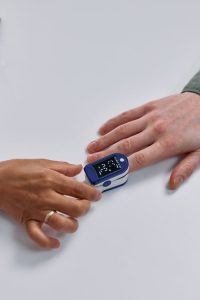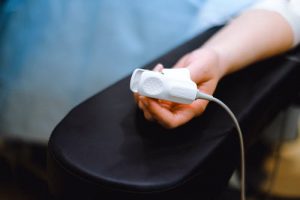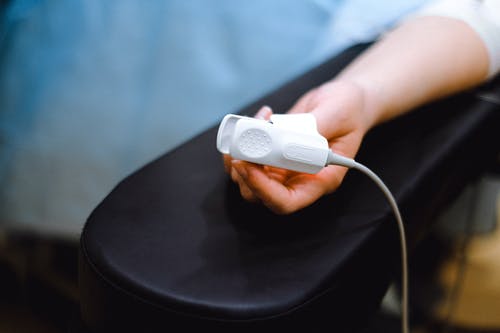Oxygen participates in the formation of 90% of the energy produced by the body.
It is necessary for the chemical reactions of breaking down food molecules and releasing energy from them for the functioning of all organs and systems of our body.
Saturation Index is a measure of oxygen saturation in the blood. The rate of oxygen saturation in the blood in adults is 95-99%. If the value drops below, the person experiences symptoms of hypoxia, or oxygen deficiency.
Table of Contents
What is an Oxygen Saturation Index of a Healthy Person (OSI) ?
Saturation is measured as a percentage.
They mean the ratio of the number of hemoglobin molecules to the total number of molecules in conjunction with oxygen. There are two ways to measure:
- SaO2 is a designation for true saturation, which is measured by an arterial blood test.
- SpO2 is oxygen saturation measured by a non-invasive method such as a pulse oximeter.
What is the oxygen saturation index in a healthy person?
The oxygen level in the blood (saturation) in a healthy person should be 95-99%.
However, there are people with chronic lung diseases, with cardiovascular insufficiency, their saturation can be 92-94% and for them this is normal.
In COVID-19, it is recommended to call a doctor when oxygen saturation drops to 94% Saturations of 92% and below are generally considered critical.
A person with such a low blood oxygen reading requires urgent medical attention.
For example, in severe chronic obstructive pulmonary disease, which is common in smokers, the oxygen saturation rate can be between 88% and 92% .
Usually, the body of such people is adapted to lower oxygen levels. If you have a pulmonary disease, your doctor will tell you which oxygen saturation reading should be an alarm for you.

It is important to note that the situation will be different for newborn babies. Infants have poorly developed lungs, and there is little iron in the body, therefore oxygen saturation of 98% and below up to 92% is considered the norm.
In premature babies, saturation can drop to 82%: in this case, artificial ventilation is used.
There is an average rate of oxygen saturation in adults when measured with a pulse oximeter. Average values are shown in the table:
| Patient Condition | Oxygen Saturation Index (OSI) |
| Normal oxygen saturation in an adult | More than 95% |
| Respiratory failure 1st degree | 90-94 % |
| Respiratory failure 2st degree | 75-89 % |
| Respiratory failure 3st degree | Less than 75% |
| Hypoxemic coma | Less than 60% |
How to use the Pulse Oximetry?
To measure the level of oxygen in your blood, a pulse oximeter must be placed on the terminal phalanx of the dominant finger. Most doctors place it on their index fingers.
Next, press the button and wait a few seconds. Two digits will appear on the screen – the upper one will show the percentage of oxygen in the blood, and the lower one – the pulse.
It is better to measure saturation while sitting or lying down. The hand should not be suspended, it should be placed flat on the table or bed.
Choose the best finger pulse oximeter Here.
Why is the rate of oxygen in the blood low?
This can happen for a variety of reasons. For example, problems can arise with diseases of the blood or respiratory system.
The latter is just characteristic of COVID-19. After pneumonia, pulmonary fibrosis often occurs when, due to the disease, the “breathing” lung tissue is replaced by connective tissue.
This can be compared to closed vents. You would love to breathe, but fresh air does not pass through tightly closed windows.
Another reason is blood diseases. For example, common anemia. When there are not enough red blood cells or hemoglobin itself, then oxygen simply has nothing to move around the body. In this case, saturation also falls below normal.
At what saturation oxygen is given? The correct answer depends on the exact reason for its deficiency. Let’s consider the recommendations of specialists for the treatment of patients.
| Saturation Index Level OSI | Measures taken by the doctor |
| Below 92% | The patient receives oxygen through an oxygen concentrator.
Masks or nasal catheters / cannulas are used to deliver the gas mixture. |
| Below 85% | The patient is taken to the intensive care unit. Non-invasive or invasive ventilation is used. |
| Below 80% | The patient is connected to mechanical ventilation.
If there are problems with breathing apparatus, the patient can be put into an artificial coma. |
Inhalation methods are most effective in combating low saturation. For moderate respiratory distress, hospitals typically use oxygen concentrators to which face masks or nasal cannulas are attached.
Invasive ventilation is only used in extreme situations – for example, when oxygen saturation is 70 or lower.
The problem with ventilators is that the muscles that are responsible for breathing atrophy in just a few hours.
If the patient manages to successfully cope with pneumonia, when disconnected from mechanical ventilation, he will have to re-learn to breathe and swallow.
There is also a patient risk of complications, including deterioration of cognitive functions, multiple organ failure, metabolic disorders.
How quickly can Oxygen saturation decrease?
The saturation can gradually decrease over the course of hours, sometimes even days. It is often possible to observe a decrease in oxygen saturation by 1-2% per day.
If a complication arises, for example, thrombus formation in the pulmonary artery, then the oxygen level in the blood can drop to critical levels in a matter of minutes. In many patients, the worsening of the situation is most often associated with such blood clots.
What happens when oxygen is low?
Shortness of breath, chest pain, confusion, headache and fast heartbeat, cyanosis of the nasolabial triangle and fingertips – these unpleasant symptoms can appear if the oxygen level in the blood begins to fall.
Can a pulse oximeter show an incorrect result?
Yes. In addition to the technical problems of the device, this can be caused by improper preparation of a person for measuring oxygen in the blood.
A pulse oximeter can show low oxygen saturation after strenuous exercise or strenuous work. In addition, the device will show a false result if the patient’s hand is cold – vasoconstriction occurs. If the nails are damaged or covered with gel polish, this will also affect the indicator.
If the patient breathes through a wet respirator, or his mask does not allow air to pass through well, this can also affect the oxygen level in the blood and, accordingly, the readings of the pulse oximeter.
It is better to re-measure the saturation a few minutes after the first attempt in order to get a more accurate result.

Do You need to know your Oxygen saturation?
As a rule, you don’t need to know your OSI. An exception if you have sick lungs and you are observing the dynamics of the disease
Methods of bringing the level of oxygen saturation back to normal.
The main method of therapy for hypoxemia is oxygen support. However, there are also auxiliary ways to help the body.
Medications
They are commonly used to increase hemoglobin and general strength.
For treatment, antihypoxants that normalize redox processes in tissues, anticoagulants that prevent the formation of blood clots, supplements to reduce pressure (prevent pulmonary edema), and infusion therapy to improve blood flow can be useful.
As restorative agents are used:
- Iron preparations
- Magnesium preparations
- Folic acid
- B vitamins
- Ascorbic acid
- Vitamin complexes.
In order for saturation to return to normal and blood oxygenation to occur without pathologies, doctors recommend doing breathing exercises.
It will be useful after any severe respiratory illness. It can be used when the patient does not have shortness of breath and the temperature has subsided.
The main purpose is to stimulate blood circulation, increase the elasticity of lung tissue and strengthen the respiratory muscles. You need to do it, gradually increasing the duration of the exercises from 5 to 15 minutes.
- Lying on our back, we inhale through the nose in three counts, then for five counts we take a long exit.
- We sit down on a chair and put our hands down. As you inhale, raise your straight arms above your head, palms up, as you exhale, slowly lower them.
- We stand with our arms bent at the elbows, hands on our shoulders. While inhaling, we spread our arms to the sides in three counts, then exhale slowly through the mouth, folding our lips into a tube. At the same time, we start the brushes behind the shoulders.
What is an Oxygen Saturation Index of a Healthy Person OSI – My Conclusion
Here are general recommendations that will be useful not only for people with low oxygen saturation, but also for healthy people.
- It is necessary to ventilate the premises well,
- Regularly go out for walks, and preferably in the forest, where the oxygen content in the air is higher than in the city.
- Oxygen cylinders(bottles) are a good alternative for patients who are unable to walk due to weakness, old age or distance from green areas.

